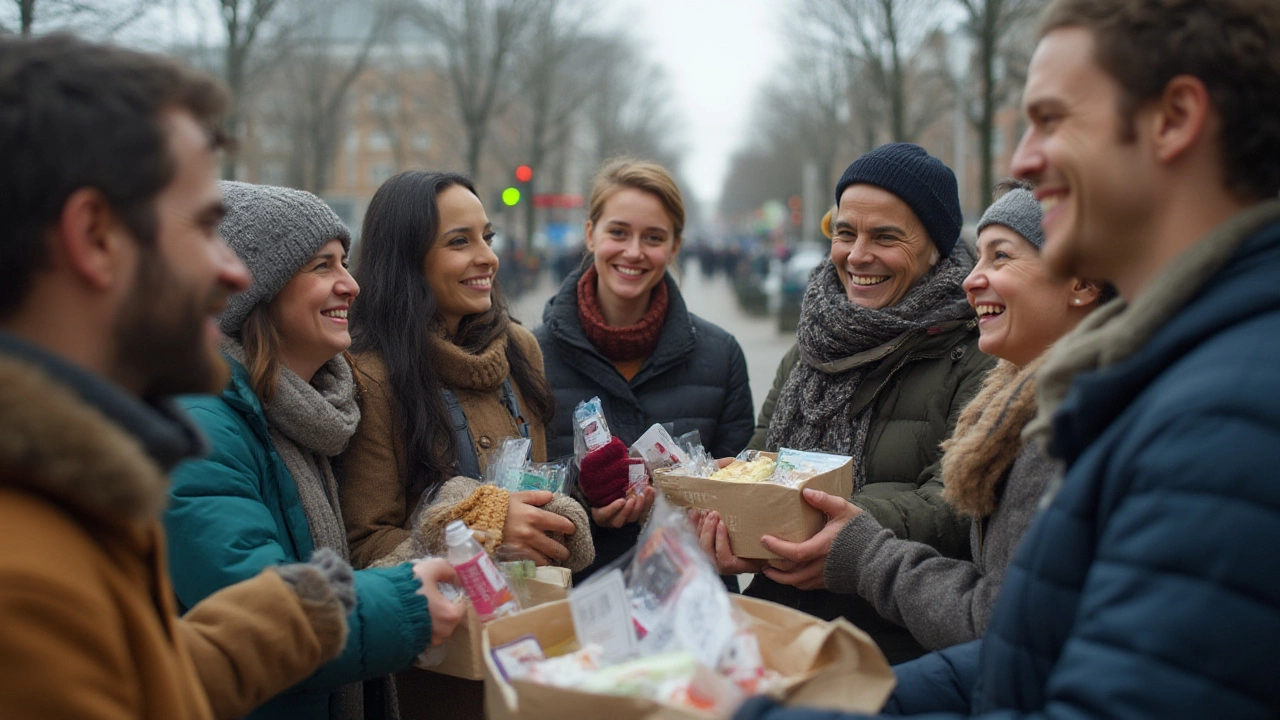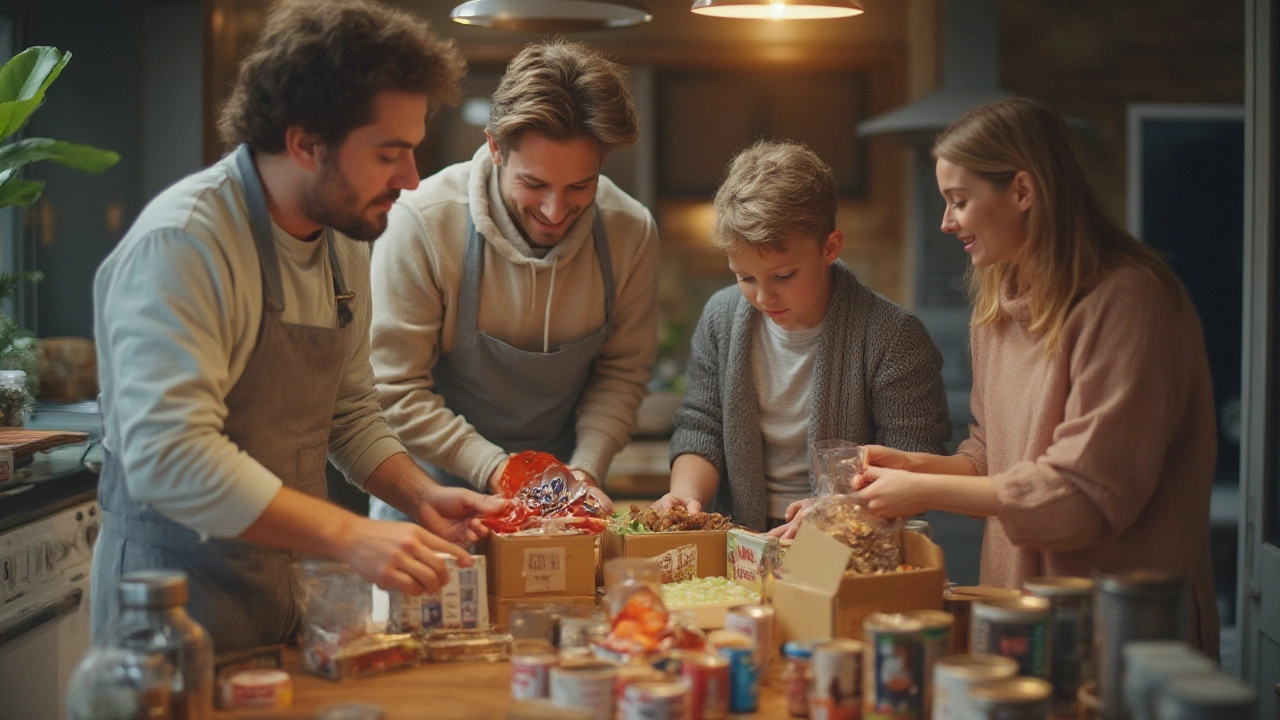You’d think a bottle of water, a snack, and some warm socks is always a win. The truth is a little stickier. Building care packages for people who are unhoused can go off the rails fast, even when every intention is pure. Every year, people spend millions filling up bags—hoping to help—only to realize some items miss the mark or actually create headaches. There’s a real art to this.
Knowing what not to include spells the difference between something that gets used and something that ends up in the trash, or worse: causes trouble. So what lands on the no-go list? People living on the street have different needs, and what works for you after a sleepless road trip doesn’t always work for someone with no bathroom, nowhere to cook, and nothing to carry extra weight. A little research goes a long way—sometimes the things we think are kindest, aren’t.
Why Some Items Just Don’t Work Out
Ever thought “How could a can of soup possibly hurt?” or “Who wouldn’t want some toothpaste?” Here’s where it gets tricky. Many popular donation items turn out to be surprisingly useless, or even risky, for someone on the street. Want to see a social worker grimace? Hand them a big bag full of canned food and nowhere to open it. The top offenders are foods and items that sound good but don’t translate to real life outside, or that need resources most folks don’t actually have.
The classic example: canned goods without pull-tabs. Yes, shelf-stable food is important, but if someone doesn't have a can opener, those cans might as well be bricks. It’s not just about food though. Hygiene products are complicated. Giving out giant bottles of shampoo or conditioner isn’t practical when you don’t have a secure place to put them—or regular access to showers. Plus, carrying extra weight on your back day after day makes things like huge bottles (or anything heavy, fragile, or bulky) more trouble than they’re worth. Even umbrellas make the list, since carrying long fragile items is nearly impossible if you’re already juggling bags of your whole life.
Let’s talk about perishables. Fruit or homemade sandwiches sound great at a picnic, but out on the street, they spoil fast. Food poisoning is a serious concern if storage isn’t available. Add to that any foods that are sticky or messy (think peanut butter jars without enough water to clean up), or foods that are hard to chew without access to dental care, and the list of “nope”s grows longer. It’s a reality that even snacks or bars that seem healthy—like granola bars with nuts—may not work for everyone, especially those with dental issues (12% of unhoused adults in the US report serious dental pain monthly).
On the hygiene side, think twice about mouthwash. Most mouthwash has alcohol, and addiction is a real issue—it's why many shelters ban it. Even hand sanitizer, recently a care kit staple, is tricky. Not only because of alcohol content (sometimes abused as a substitute), but because some people with sensitive skin or open wounds find it stings like crazy. What about medications? Never include medications, even over-the-counter kinds. Laws might get you in trouble for giving them out, and you can’t know a person’s allergies or reactions.
Lastly, clothing. Used undies or socks, or anything not new or sanitary, is out—people often toss these fast because they’re uncomfortable or may even cause infection. Also, try to avoid giving out shoes unless you know the person’s exact size. Ill-fitting shoes lead to blisters and injuries, which can take forever to heal without proper medical care.
Items That Seem Nice But Miss The Mark
It’s easy to get caught up in what would brighten your day, but some seemingly thoughtful additions are a miss or even dangerous. Candles, for example—meant to be cozy or helpful for warmth—pose fire risks in tents or encampments. And you know those little hotel shampoo bottles everyone collects? They’re easy to hand out, but so tiny they barely last one wash. Soap bars often melt and dissolve into a gritty mess in the bottom of someone’s bag without a container. Wet wipes or hand wipes are handy, but go for unscented and alcohol-free—fragranced ones can irritate skin or cause allergic reactions.
Gift cards show up in care kits too, but not every unhoused person can use them easily. Stores may refuse to let them charge a phone or use restrooms. Worse, sometimes they’re targeted and stolen for those cards. And expensive items—think nice headphones, luxury snacks, or electronics—can cause more problems by making someone a target for theft or even violence.
Don’t forget daily reality: people who are unhoused usually have very limited space. Anything bulky, like heavy blankets, big toys for kids, or books, are tough to haul. Paperwork-heavy resources or pamphlets rarely get read, especially if they don’t include direct info on how to access shelter or food. Chapstick with menthol, for instance, seems soothing but can further dry out or irritate lips exposed to the weather. Scented deodorants or lotions can trigger migraines or allergies, so plain, unscented is always safer.
If you’re thinking of including bottles of water, opt for ones with tight screw tops. The disposable water bottles spill easily. And powdered drink mixes, which require mixing and clean water, often go unused (clean water access is a daily challenge for many people living on the street—the EPA reports around 500,000 people in the US deal with chronic water insecurity). It might be tempting to toss in sugary snacks to boost morale, but lots of sugar with no dental care available isn’t great for anyone.
Oh, and razors? They top the “please don’t” list for many outreach workers. The risk of accidental cuts or even weaponization is high. Nail clippers are safer for personal hygiene. And don’t include hair dye or makeup kits, which can overwhelm or just weigh someone down.

What to Avoid: A Handy Table
| Item | Why It’s a Problem |
|---|---|
| Canned food (no pull tab) | No can opener = inedible, heavy |
| Homemade snacks/fruit | Perishability, spoilage risk |
| Mouthwash/hand sanitizers (alcohol) | Potential for abuse, skin irritants |
| Large/family size bottles | Heavy, hard to carry or store |
| Used clothing/undergarments | Sanitation risk, discomfort |
| Gift cards | Can be hard to use or make recipients targets |
| Razors | Injury/weapon risk |
| Powdered drink mixes | Require clean water |
| Paperwork heavy pamphlets | Not practical, often ignored |
| Wet wipes (scented/alcohol) | Skin irritation, allergies |
| Large blankets, heavy items | Difficult to transport |
| Candles | Fire risk |
| Sugary snacks | Dental health risks |
| Perfumed lotions or deodorant | Allergy/migraine triggers |
| Medications (even OTC) | Legal, allergic, or reaction issues |
| Umbrellas (full size) | Awkward, hard to carry |
How to Get It Right: Smarter Alternatives and Tips
There’s a right way to give—a little thought goes a long way. Here’s how to pack care kits that make a real dent. Go for compact, easy-to-carry items, and whenever possible, homeless care packages should be tailored to life without stable shelter. Start with weather-resistant socks and gloves. Not sexy, but they make all the difference. If you’re adding hygiene products, stick with travel-size, unscented, and sealed. Think toothpaste tablets, unscented baby wipes, and mini bottles of sanitizer without alcohol.
When it comes to food, protein and nutrition matter. Look for non-perishable, easy-open snacks like jerky, nut-free trail mix, or high-calorie bars that don’t require cooking. Shelf-stable cheese, peanut butter in squeeze packs, or pouches of tuna (with easy tear tabs) are good picks. If you go with fruit, dried versions last longer and weigh less. Energy drinks or single-serving juices (in boxes) can be a treat, but steer clear of tins and cans (without pull tabs), which rarely get opened and just drag down bags.
Water bottles with built-in filters are a gold standard but pricey. Good reusable water bottles in lightweight plastic get a thumbs-up from street outreach teams. Cheap ponchos, space blankets, or compact beanies can be lifesavers in winter. When giving clothing, socks (new, thick, and dark colored) rule, followed by gloves. Underwear should always be new and in universal sizes. No shoes unless you know the person’s size spot-on.
Think, too, about safety in sharing: always hand over packages with a smile and ask if your gift is welcome. It’s better to offer choice and maintain dignity than to assume you know best. If you’re not sure what the need is, ask a local shelter directly. Many have wish lists or can tell you exactly what’s needed (or not). According to a 2023 survey by the National Homelessness Law Center, 68% of shelters reported getting overloaded with unusable donations each winter—thoughtful choices save everyone time and frustration.
Little extras—a hand-written card, a resource list with up-to-date local services, or a prepaid phone card—can be game changers if you know the person can use them. While it might feel good to clear out your cupboards, remember: whatever you give, someone has to carry, store, and possibly rely on each day. When in doubt, lighter, smaller, and sealed always trumps heavy, messy, or hard-to-use items.
So next time you’re putting together a care package, ask yourself: would you want to lug it around in the rain, keep it safe, and use it without a bathroom or kitchen? If you’re not sure, ask someone who has lived it or works in outreach. The best help is the kind that actually helps in the real, messy world where survival basics matter most.
